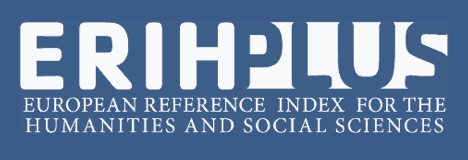ETHNOGEOMORPHOLOGICAL MAPPING BY RESIDENTS OF A RURAL COMMUNITY OF THE MÉDIO-PARNAÍBA, PIAUÍ
Abstract
Understanding morphodynamic processes, from the perspective of traditional/local communities, is important in the implementation of actions regarding the use and management of the environment. The objective was to verify which forms of relief are perceived by the population and how these knowledge is used to identify and classify them. The research was developed in the municipality of Santo Antônio dos Milagres, state of Piauí, voluntarily participating 34 individuals. The collected data were analyzed quali-quantitatively, with the aid of geoprocessing techniques. Four ethno-environments were identified: Baixão and Baixa, Morro or Costaneira and Chapada or Terra Plana. These units correspond, respectively, to the Lacustrine Plain, Lowered Plateaus and Tableland. It is understood that ethnogeomorphological cartography is an important vehicle of communication between popular and scientific knowledge.
References
ALVES, Jose Thiago Olegário; RIBEIRO, Simone Cardoso. Etnogeomorfologia: classificação das formas de relevo segundo a percepção dos agricultores do sítio cidade no município de Caririaçu – CE. Revista Geonorte, Edição Especial 4, v. 10, n .1, p. 77-80, 2014.
BEGOSSI, Alpina; LOPES, Priscila F.; OLIVEIRA, Luiz Eduardo C. de; NAKANO, Henrique. Ecologia de pescadores artesanais da Baía da Ilha Grande. São Carlos: Rima, 2009.
BOGDAN Robert; TAYLOR, Steven J. Introduction to qualitative research methods: a phenomenological approach to the social sciences. New York: J. Wtley, 1975.
IBGE. Instituto Brasileiro de Geografia e Estatística. Cidades. 2010. Disponível em: http://www.cidades.ibge.gov.br. Acesso em: 19 jan. 2018.
CHRISTOFOLETTI, Antonio. Geomorfologia. São Paulo: Edgard Blücher, 1980.
EMBRAPA. Empresa Brasileira de Pesquisas Agropecuárias. Sistema Brasileiro de Classificação de Solos. 3ed. Brasília, DF: Embrapa, 2013.
KÖPPEN, Graz W.; GEIGER, München R. Berlin: Handbuch der klimatologie. Verlag Von Gebrüder Borntraeger, 1936.
LAVILLE, Christian.; DIONNE, Jean. A construção do saber: manual de metodologia da pesquisa em ciências humanas. Porto Alegre: Artmed, Belo Horizonte: Editora UFMG, 1999.
LIMA, Iracilde Maria de Moura Fé. Relevo piauiense: uma proposta de classificação. Carta Cepro, Teresina, v. 2, n. 2, p. 55-84, 1987.
LOPES, Vanessa Martins; COSTA, Sinara Pereira Lima; RIBEIRO, Simone Cardoso. Etnogeomorfologia: resquícios da cultura local na relação com a paisagem. In: II Simpósio Nacional de Estudos Culturais e Geoeducacionais e V Encontro Cearense de Geografia da Educação, 2013, Crato. Anais eletrônicos... Crato: Universidade Regional do Cariri, 2013. Disponível em: https://www.researchgate.net/publication/313667518_ETNOGEOMORFOLOGIA_RESQUICIOS_DA_CULTURA_LOCAL_NA_RELACAO_COM_A_PAISAGEM. Acesso em: jan de 2018.
LOPES, Vanessa Martins; PEREIRA, Cássio Expedito Galdino. O homem, o relevo e a cultura: Etnogeomorfologia sertaneja na região sul do Ceará - Brasil. Estudios Territoriales, p. 3164-3181, 2014.
NODA, Sandra do Nascimento; MARTINS, Ayrton Luiz Urizzi; NODA, Hiroshi; SILVA, Antonia Ivanilce Castro da; BRAGA, Maria Dolores Souza. Paisagens e etnoconhecimento na agricultura Ticuna e Cocama no alto rio Solimões, Amazonas. Boletim do Museu Paraense Emílio Goeldi, Belém, v. 7, n. 2, p. 397-416, 2012.
PFALTZGRAFF, Pedro Augusto dos Santos; TORRES, Fernanda Soares de Miranda; BRANDÃO, Ricardo de Lima. Geodiversidade do estado do Piauí. Recife: CPRM, 2010.
PIAUÍ. Secretaria do Meio Ambiente e Recursos Hídricos. Plano Estadual de Recursos Hídricos – Relatório Síntese. Teresina/PI: SEMAR, 2010.
POSEY, Darrell Addison. Consequências da presença do índio Kayapó na Amazônia: recursos antropológicos e direitos de recursos tradicionais. In: CAVALCANTE, Clovis (Org.). Desenvolvimento e natureza: estudos para uma sociedade sustentável. 3º ed. São Paulo: Cortez, Recife: Fundação Joaquim Nabuco, 1994. p. 107-118.
RIBEIRO, Karoline Veloso; ALBUQUERQUE, Emanuel Lindemberg Silva. Mapeamento das formas de uso e cobertura da terra na bacia hidrográfica do rio Mulato, Estado do Piauí. Caderno de Geografia, v. 27, Número Especial 1, p. 106-118, 2017.
RIBEIRO, Simone Cardoso. Etnogeomorfologia sertaneja: proposta metodológica para a classificação das paisagens da sub-bacia do rio Salgado/CE. 2012. 278p. Tese (Doutorado em Geografia) - Universidade Federal do Rio de Janeiro, Rio de Janeiro, 2012.
RIBEIRO, Karen Veloso; RIBEIRO, Karoline Veloso; ALBUQUERQUE, Emanuel Lindemberg Silva; BARROS, Roseli Farias Melo de. Do ver ao saber: etnogeomorfologia por moradores de uma comunidade rural no estado do Piauí. Gaia Scientia, v. 13, n. 1, p. 1-10, 2019.
ROSS, Jurandyr Luciano Sanches. Geografia do Brasil. 4. ed. São Paulo: Universidade de São Paulo, 2001.
SIQUEIRA, Edson Marcio; BENASSI, Dassio Antonio; BENASSI, Caetano; SANTOS, José Alfredo Batista dos; SILVA, Henrique Luis. Etnoconhecimento dos agricultores do centro sul do Paraná. Cadernos de Agroecologia, Pinhais, v. 9, n. 1, p. 1-4, 2014.

This work is licensed under a Creative Commons Attribution-NonCommercial 4.0 International License.
Policy Proposal for Free Access Journals
Authors who publish in this journal agree to the following terms:
a. Authors retain the copyright and grant the journal the right of first publication, with the work simultaneously licensed under the Creative Commons Attribution License which allows the sharing of the work with acknowledgment of the authorship of the work and initial publication in this journal.
b. Authors are authorized to take additional contracts separately, for non-exclusive distribution of the version of the work published in this journal (eg publish in institutional repository or as a book chapter), with acknowledgment of authorship and initial publication in this journal.
c. Authors are allowed and encouraged to publish and distribute their work online (eg in institutional repositories or on their personal page) at any point before or during the editorial process, as this can generate productive changes, as well as increase the impact and The citation of published work (See The Effect of Free Access).





















